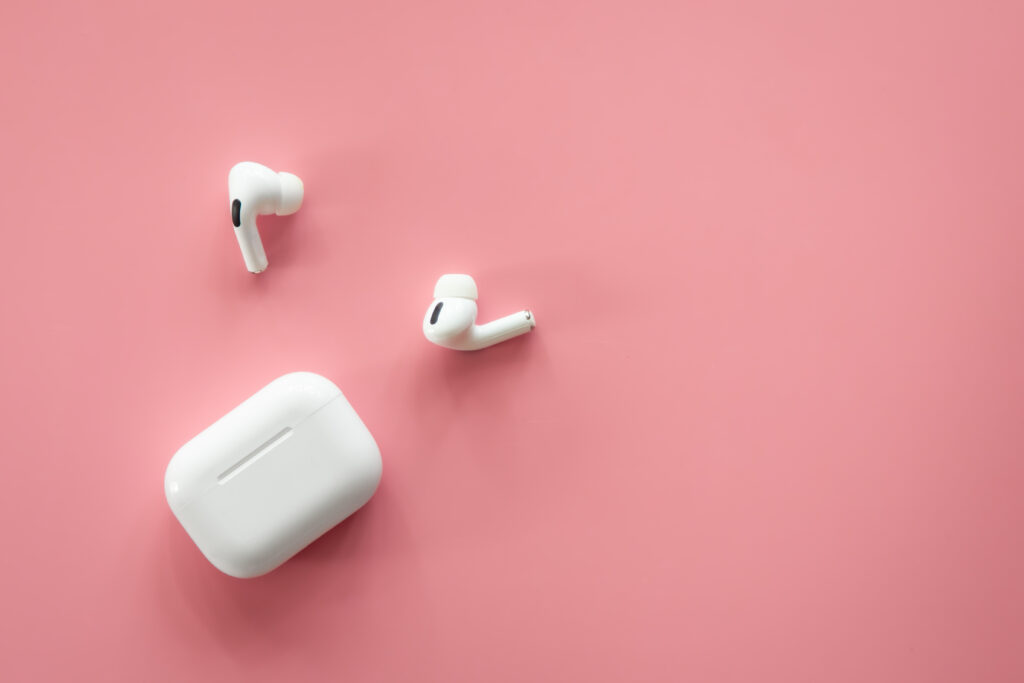However, a significant transformation is on the horizon over the next few years: The earbuds of 2025 will boast substantial advancements compared to their present counterparts.
What’s happening?
The realm of personal audio is poised for a swift entry into a new era, driven by technological, legal, and manufacturing breakthroughs.
Anticipate the resolution of some of wireless audio’s major drawbacks, offering improved solutions for how listeners perceive sound and enhanced convenience in battery-dependent products.

The simultaneous occurrence of these advancements might be overwhelming, but being aware of what’s on the horizon in 2025 is crucial for informed purchasing decisions in 2024. The conventional wisdom of today is fleeting.
Here’s what will shake up the industry in the next year and a half:
Rapid Proliferation of MEMS Speakers
Various driver types exist for earbuds and headphones, but none are as captivating as the Microelectromechanical Systems (MEMS) speaker.
Representing a technological leap akin to the transition from hard drives to solid-state drives (SSDs), MEMS speakers differ significantly in form from traditional moving coil or balanced armature driver designs, boasting reduced mass, heightened power efficiency, and consistent production yields.
Also known as solid-state speakers, these components can be directly soldered onto a circuit board, offering increased reliability compared to traditional drivers.
The introduction of MEMS speakers to earbuds is poised to elevate the performance spectrum in battery life, sound quality, and noise cancellation.
Although the transition to full-range MEMS drivers may take time, the initial results, as seen in products like the Creative Aurvana Ace 2, are promising.
New Chipsets Enabling Lossless Audio Over Wireless
Despite significant improvements in wireless audio standards and codecs, Bluetooth remains a bottleneck in sound quality.
The upcoming Qualcomm S7 and S7 Pro chipsets for wireless audio products will support micro-power Wi-Fi, promising bit-perfect lossless audio transmission. This technology allows connectivity to source devices through your home’s Wi-Fi network, offering greater flexibility in device usage.
While initially limited to Android smartphones with a Qualcomm Snapdragon 8 Gen 3 processor or better, this leap is substantial enough to anticipate advancements from competitors like Apple, MediaTek, and Samsung.
Earbuds Expanding Roles Beyond Hearing Aids
Advancements in earbud technology are expanding their roles, particularly in the realm of hearing assistance. Legal changes in the US, coupled with collaborations between headphone manufacturers and hearing aid companies, pave the way for earbuds to assume some duties traditionally handled by hearing assistive devices.
The appeal lies in the added features that earbuds bring to those requiring hearing assistance.
This shift may alleviate the issues associated with the expense, fragility, and limited coverage of hearing aids by insurance plans. Moreover, the integration of wireless earbuds as hearing assistive devices presents a positive development, offering a smoother transition for users.
Advancements in Understanding Listener Preferences
As personal audio technology progresses, so does our comprehension of what constitutes “good sound.” Ongoing research and standards development by entities like Harman have refined our understanding of user preferences in audio devices.
With the adoption of advanced test equipment and new research avenues, the industry is moving towards a user-centric approach to sound tuning.
Research into earbud response preference, considering age-related patterns, is aided by the latest generation of ear simulators, contributing to a more nuanced understanding of sound quality.
The shift towards Multi-Dimensional Audio Quality Scores further contextualizes audio product performance based on listener perspectives.
Reduced Charging Needs through Lower Power Requirements and Solar Cells
Addressing battery concerns, the commercial success of photovoltaic (solar) cells for headphones, such as those developed by Exeger and employed by companies like 3M and Urbanista, is noteworthy.

Solar power is set to increase its market share in headphones by 2025. The prospect of wireless headsets requiring less frequent charging is appealing, mitigating the inconvenience of single-use batteries and the untimely demise of music playback.
As personal audio hardware adopts lower-power applications, the incorporation of solar power sources onto bands and cases becomes a feasible solution.
Products slated for release in the next two years may necessitate wired charging less often, with outdoor exposure potentially extending battery life as needed.
Conclusion:
In conclusion, the next couple of years hold the promise of lossless wireless audio and enhanced hardware and usability for earbuds and wireless headphones.
While the proliferation of chipsets, components, and software advancements will take time, addressing current shortcomings is poised to elevate consumer satisfaction with personal audio products.